How much does it cost to fly a glider?
In Australia, your first flight is called an Introductory Flight or Air Experience Flight where the aim is to show you what the sport is like. These flights typically last around 20 to 40 minutes and may cost from $250 to 350. If you decide you want to learn to fly, the price will be considerably less but you will need to join a club and the Gliding Federation of Australia.
Is flying a glider difficult?
No, but it does need commitment and perseverance to learn the skills. You need to be able to use your hands and feet simultaneously to do different things and to interpret your surroundings and react accordingly. The basic skills that we use to drive a car or ride a motor bike or a push bike demonstrate these skills. Just a more gentle touch.
Disabilities don’t preclude the enjoyment of soaring through the air. People with disabilities are able to experience the thrill of gliding with assistance getting in and out of the glider. Every individual can participate at their personal level.
What are gliders made of?
Gliders are made of a wide variety of materials, from wood and fabric, to ultra-modern fibre glass, carbon-fibre and kevlar based materials.
Australia also has an active vintage glider movement, with many gliders over 50 years old. Gliders are often designed for a specific purpose such as training, cross-country flying or aerobatics, but most gliders can do a bit of everything.
High performance gliders are very streamlined with a minimum of obstructions to the airflow, which would otherwise cause drag. Glider design is sophisticated and at times has led to developments that later find their way into general aviation.
How do I learn to fly a glider?
Once you join a club, you will start your flying in a two-seat glider. While you are training, you will learn basic flight control in a until you are competent enough to go on your own. Two-seat gliders have the same controls and instruments in the front and back (or on both sides) to allow the instructor to demonstrate. This also allows your instructor to take control when needed.
These gliders are usually larger and easier to fly than the sleeker, single-seat gliders. This is to make sure that the student can easily learn the basic skills of flying without having to worry about high performance and complicated controls. Many pilots continue to fly in two-seat gliders once they are solo so that they can share the enjoyment with their friends and family.
What equipment is in a glider?
The following flight instruments are useful however they are only an aid to safe gliding. The most important ‘instruments’ are those that you bring with you…your senses (include common sense here)! Glider pilots must demonstrate flying without reference to any instruments before they are permitted to go solo.
The key to safe and efficient gliding is to rely primarily on your senses: Your vision and regular ‘lookout’ to maintain constant spatial and situational awareness; your hearing and your bodily sensations to ‘read and feel’ the air around you and your glider’s responses to that air; and, your touch to maintain a delicate connection with the control column that allows you to become one with the glider.
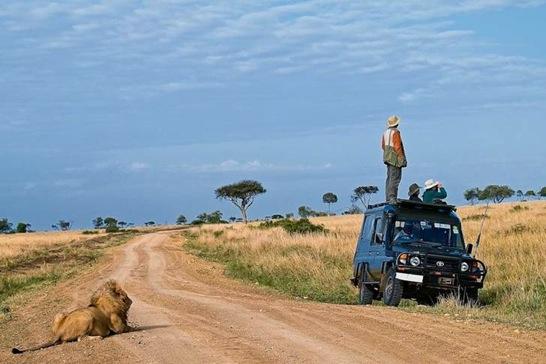
All gliders have the same basic flight controls. Your pilot will show the different instruments to you however in flight you would refer to them even less often than you would to the instruments on your car’s dashboard while driving. These will include:
Airspeed Indicator – shows you the speed of the glider.
Altimeter – shows you the height of the glider measured in Feet.
Variometer – shows you if the glider is going up or coming down. The glider flies by sinking through the air, so typically the vario will show the glider slowly coming down. If the pilot finds some lift then the vario will start to show the glider climbing. This instrument is used by pilots to help them soar over long distances. Usually this instrument will emit a sound so that the pilot can hear when they are in lift and keep looking out instead of having to watch the instruments.
Radio – for communication with the home and surrounding airfields, tug plane and other gliders.
GPS Navigation system – GPS systems have greatly reduced the cockpit navigation workload in gliders, which can fly hundreds of kilometers from their home bases.
Flarm – is an electronic device to alert pilots to other aircraft in the vicinity.
Do gliders have engines?
More and more commonly, gliders are fitted with engines. A motor enables them to either take off unaided and to leave the engine on for cross country touring (Touring Motor Glider TMG) uDo gliders have engines?ntil the pilot shuts the engine down to glide, or just take off unaided (Self Launching Glider) or just maintain height when there is no rising air to be found (Sustainer).
Motor Gliders as they are called, permit the pilot to operate with total independence. Sustainer versions allow you to get home from a long cross country flight. TMGs have propellers which are featherable once the motor is shut down. This reduces
drag while self launching gliders have automatic systems that allow the engine, propeller and pylon to be fully retracted and stored inside the existing fuselage.
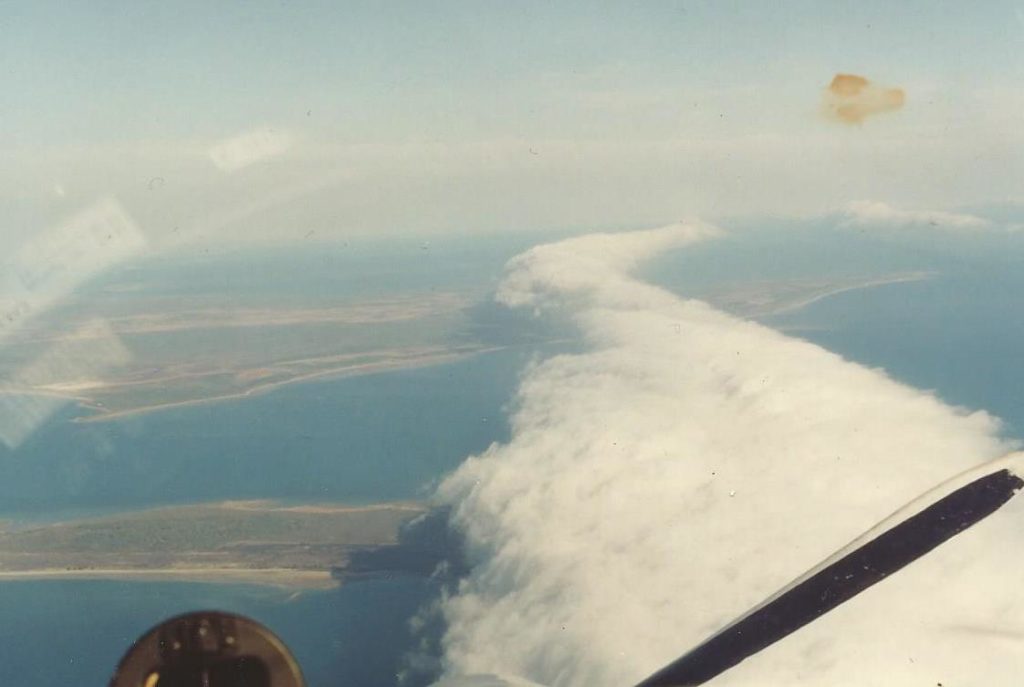
Touring Motor Gliders have the benefit of side by side seating which greatly enhances communication, demonstration and training overall. Additionally, by simply leaving the motor on for longer and climbing higher before switching it off to glide, extended flight times of up to an hour are easily attained even when there are no thermals. We recommend early training in a TMG for these reasons and then a transition across onto conventional gliders which are either aero towed or winch launched into the air.
Once you are a club member you simply pay as you go. Glider time is charged by the minute; cost per minute varies from around 50 to 60 cents. Some clubs even offer a reducing rate for each subsequent hour of flight to encourage cross country flights (More on this later).
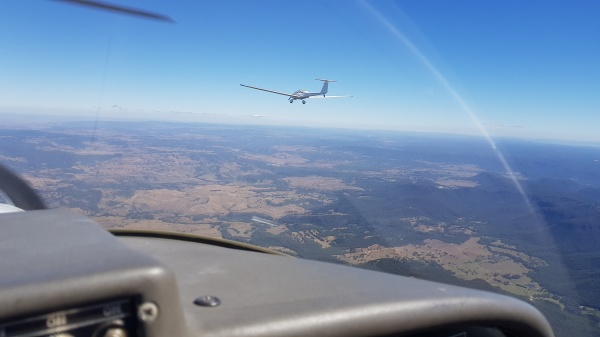

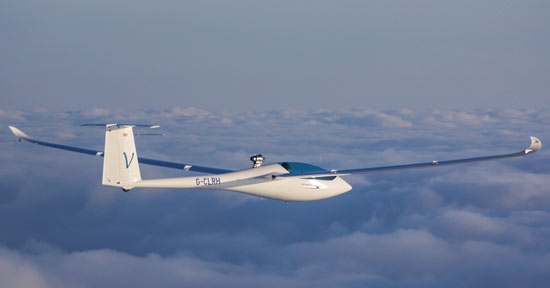
TMGs don’t have the high glide performance of conventional gliders as the side by seating seating and the bulk of the motor create some additional drag. Our H36 Dimona TMG does however soar very nicely with engine off flights of up to 300km. Its glide performance measured by its glide ratio (how far an aircraft can glide horizontally for each unit of height it has vertically, is 26:1. That means in still air, for each kilometre of height, it can glide 26 kilometres in a straight line.
How far towards obtaining a glider licence can I proceed with a motor glider?
A glider licence in Australia is called the GFA Glider Pilot’s Certificate. Motor Gliders are great for training in almost all aspects of the GPC syllabus including a number of specialised pre and post solo skills. It however is important to be competent in conventional un-powered gliders so it is best to transition to them in the lead up to going solo.
How much does it cost to learn to fly a glider?
Costs vary from club to club. Some offer a full commercial service and are priced accordingly whilst others operate under a very strong club atmosphere to keep costs down. One of the major variables in the cost of learning is your own aptitude. Some people learn faster than others, though this does not mean that they will necessarily be “better” pilots. In fact as with most skill development, a steady, regular and consistent approach over time results in achieving a higher level of skill and confidence. Here are some rough guides:
A trial lesson with a typical club costs from around $150-$300 depending on the length and type of the flight. On becoming a club member you would access significantly reduced rates. A 5 day “go for solo” course will cost from $1,800. Mandatory annual membership of the Gliding Federation of Australia (GFA) is around $250 which includes insurance and subscription to the Gliding Australia magazine and is in addition to club annual membership. Once you are a club member you simply pay as you go. Glider time is charged by the minute; cost per minute varies from around 50 to 60 cents. Some clubs even offer a reducing rate for each subsequent hour of flight to encourage cross country flights (More on this later).
Do I have to join a club?
Yes. All gliding in Australia is club based. If you choose to take a trial lesson then you automatically take out a 30 day membership of the GFA included in the price and covers you for further lessons in that time. If you choose to continue then you will need to become a financial member of the GFA and an affiliated gliding club as indicated above.
Can I buy a flight as a gift certificate?
Yes. Most clubs offer an option to purchase a gift voucher for a trial flight. Contact the club directly.
What weather can you fly in?
Any weather except low cloud, rain and very strong wind.
What happens when the wind stops?
Nothing! Some people are surprised to learn that gliders don’t actually need any wind to fly. They simply glide back to earth gracefully.
How do gliders fly without an engine?
Have you ever seen a flock of pelicans circling high in the sky or a seagull hovering motionless over a headland? The pelicans are flying in a column of rising air (called a thermal) and the seagull is flying in the rising air deflected upwards by the cliff face. In both cases the birds are in an air mass that is rising faster than they are descending through it. Gliders exploit exactly the same natural phenomenon.
How long can you stay up?
This depends on the weather. On some days there is no rising air to be found, so your flight can only be a gentle glide back to earth. This will still take around 10 – 20 minutes! On the other hand, when there is rising air to be found flights of 5 hours or more are common place. For more information on how gliders stay airborne, see the soaring section.
How high can you go?
On a typical flight you will release from the launch at around 2,000 feet. After that you may rise to 10,000 feet without the need for supplemental oxygen. The current world height record is over 70000 feet! That’s twice as high as a jet airliner’s cruise altitude!
How far can you go?
On poor soaring days you will be restricted to within glide range of the airfield, however on good days once you are competent you can attempt recognised flights of 50, 300, 500 or even 1,000 km. The straight glide performance of gliders varies immensely. A modern high performance competition glider may glide 50 km for each km (3,000 feet) of height! A typical club training glider will easily glide 25-30 km for each km of height
(3,000 feet) without encountering any rising air.
How fast can you fly?
Typically gliders fly at a sedate 50 – 70 knots (around 90 – 135 kph) between thermals. When circling in lift the speed may be as little as 40 knots (70 kph). The highest speed that gliders typically can fly at is 135 knots (250 kph)
How many can fit in a glider?
Each club will have a two seat glider for training and a range of single seaters for you to progress in to.

How much does a glider cost?
Glider costs vary greatly. Technology has brought huge gains over the last few decades, but this comes at a price. For the latest two seat self launching high performance glider from Europe you could pay upwards of $300,000. At the other end of the scale is a well used or even vintage glider for literally a few thousand dollars. A typical used glider with modest performance will cost $15,000 – $50,000. Syndicating is a popular method of reducing the individual costs.
Are there any health or physical limits?
Participants need only be at that level of health and mobility that will allow them to climb into and out of the glider (with assistance if needed). The amount of ‘hands on’ flying that you do is purely up to you. Gliders must comply with maximum weight and balance requirements as do all aircraft. Most gliders have a a seat limit of around 100kg on each seat. Some gliders can be difficult for people over 6’2″ (188cm) tall.
We support access to our sport for people with disabilities. Please feel free to inquire.
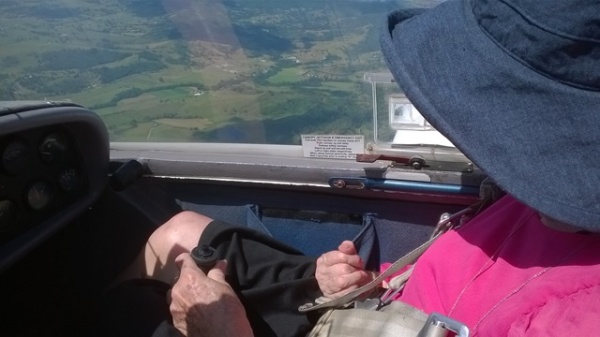

Can you take them apart?
Yes. Gliders are designed specifically to be disassembled so that they can be stored in weatherproof trailers. This also allows you to land in a paddock far from home and simply call your retrieve crew to pick you up. This is called an outlanding and is considered a normal part of gliding.
How safe is it?
Gliding is a pure adventure sport and so is not without its risks…hence the adventure! However these risks can be mitigated to a large degree by good training and by pilots then maintaining high standards of airmanship. The opportunity to take real personal control over your involvement in this thrilling sport as you hone your flying skills is a large part of the appeal. Australia’s gliding safety record is among the best in the world.
Where can I read more about gliding?
Australian Gliding Knowledge was recently released by the Gliding Federation of Australia. This comprehensive (over 200 pages) and totally enjoyable read provides information on almost everything you could possibly want to know about gliding in this country.
Follow the link below to download Australian Gliding Knowledge for free. (this may take a few minutes)
Acknowledgement to the Gliding Federation of Australia for much of the above content.